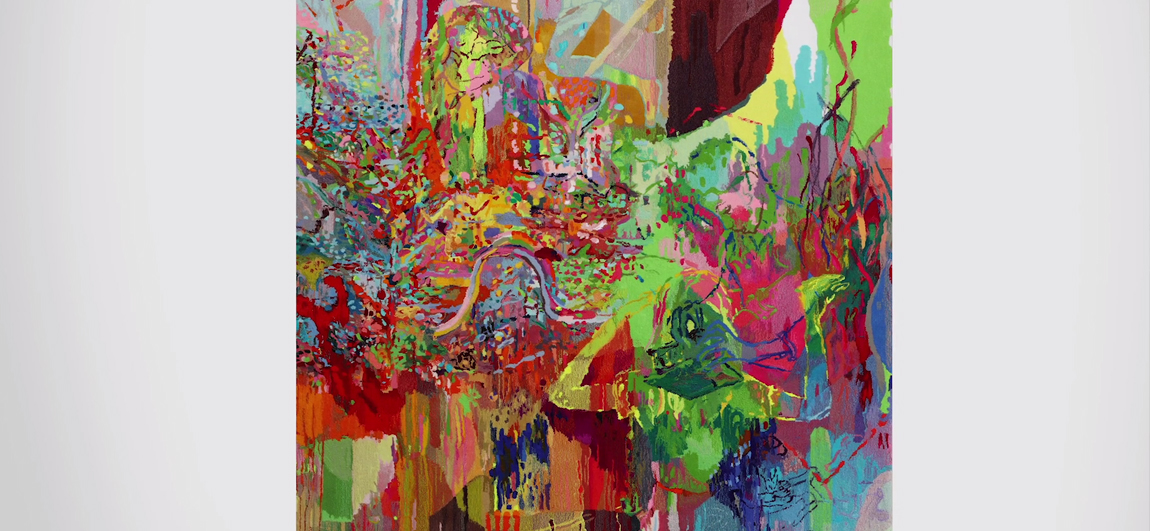Radiating Rug
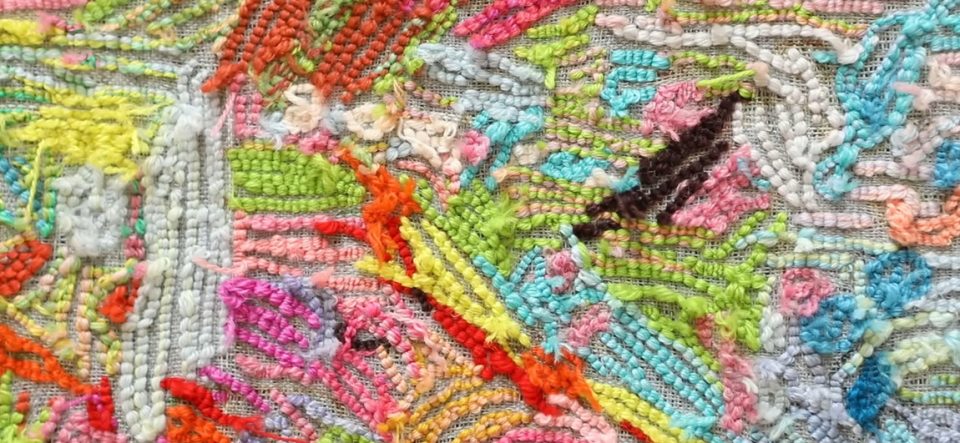
We’ve had the privilege of documenting collaborations between Dovecot Studios and the diverse group of artists they’ve worked with as the Dovecot weavers translate works of art into tapestry. Watercolour paintings, woodcuts, even sculptural pieces. So I’d grown accustomed to arriving on the weaving floor – this beautiful double height space with ceiling windows and decorative exposed trusses that hint at its past life as Victorian baths – to see all sorts of different artworks and reproductions alongside the looms.
But when I see a big fluorescent, gestural explosion of a painting in the studio I can’t help but wonder how this challenge will be met. Can this painting really be translated into weave?
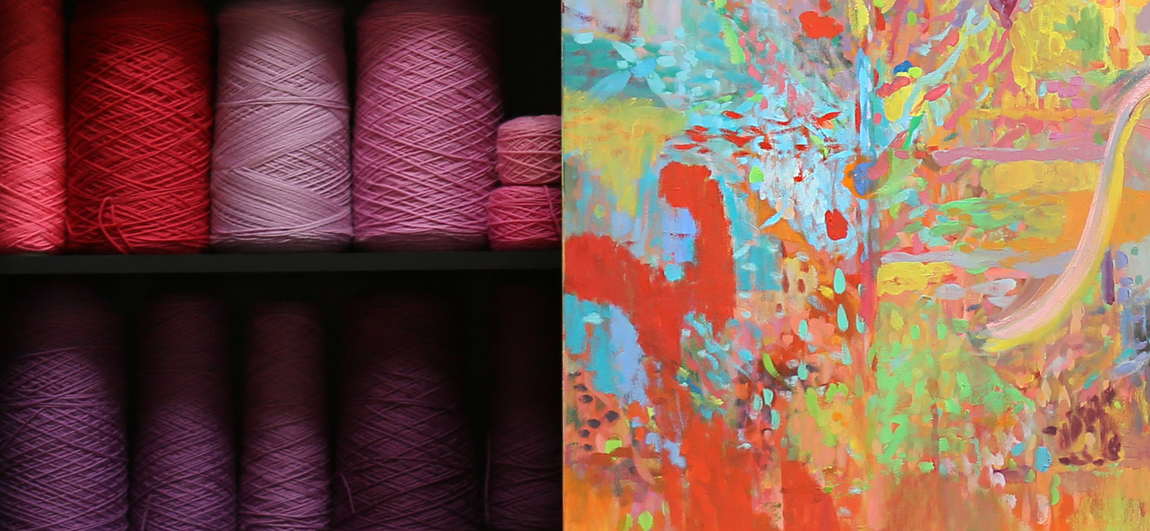
The riotous abstract painting was the latest collaboration between artist and weaver. The artist: Glasgow based painter Victoria Morton. The commissioner, the Perse School in Cambridge. But the design was not going to be woven on a loom as a tapestry, rather it was going to be ‘tufted’ to create a large scale rug. The rug had been commissioned by the School to be mounted on a wall to take pride of place in their brand new Performing Arts Centre. The painting, at first glance abstract, includes depictions of students, writing, reading, dancing, playing music.
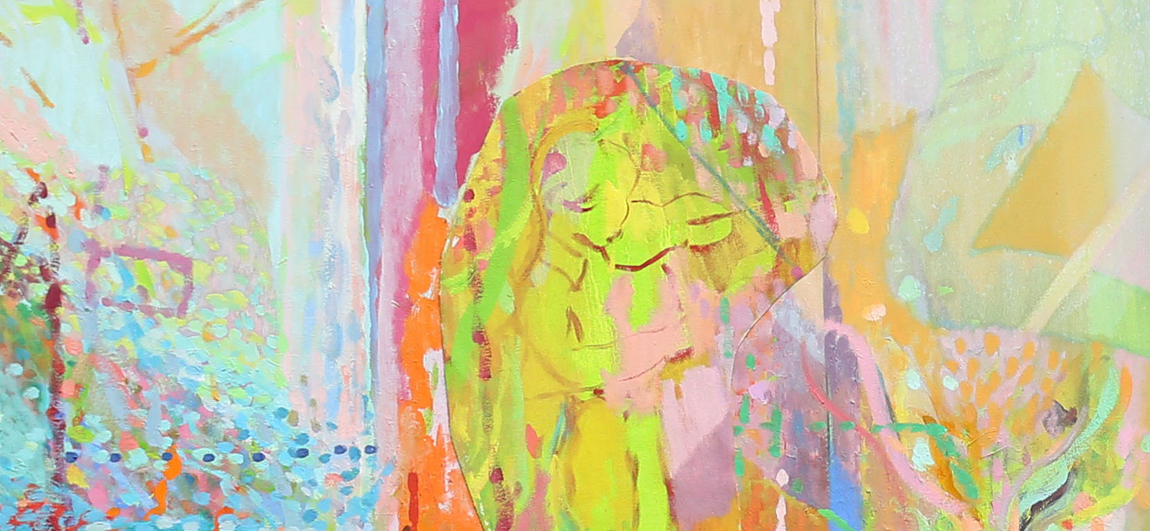
Tufting differs from the slower, methodical process of tapestry weaving. Rather than sitting at a loom quietly passing a bobbin over and under the weave of the loom, tufting involves working across the surface of the rug backing, (using ladders and scaffolding for a rug of this scale) using a gun to shoot loops of wool through the backing. The tufting gun is loud and rapid – shooting up to 30 loops per second. This project was tufted by Kristi Vana. Kristi worked in strokes that were almost gestural, drawing the gun across the surface. This work all happens on the reverse of the rug – the wool is shot through the backing and the image builds on the other side.
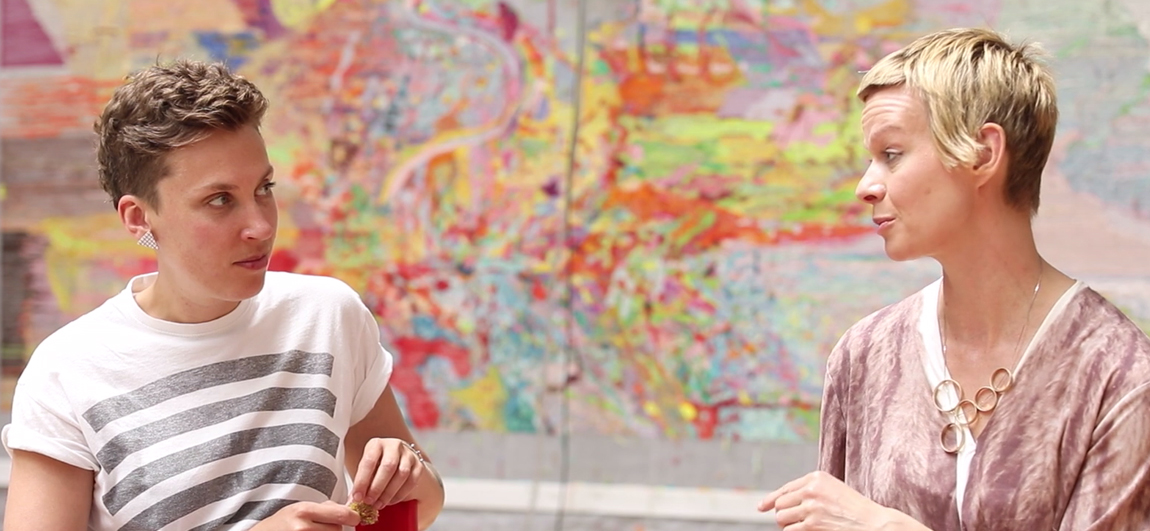
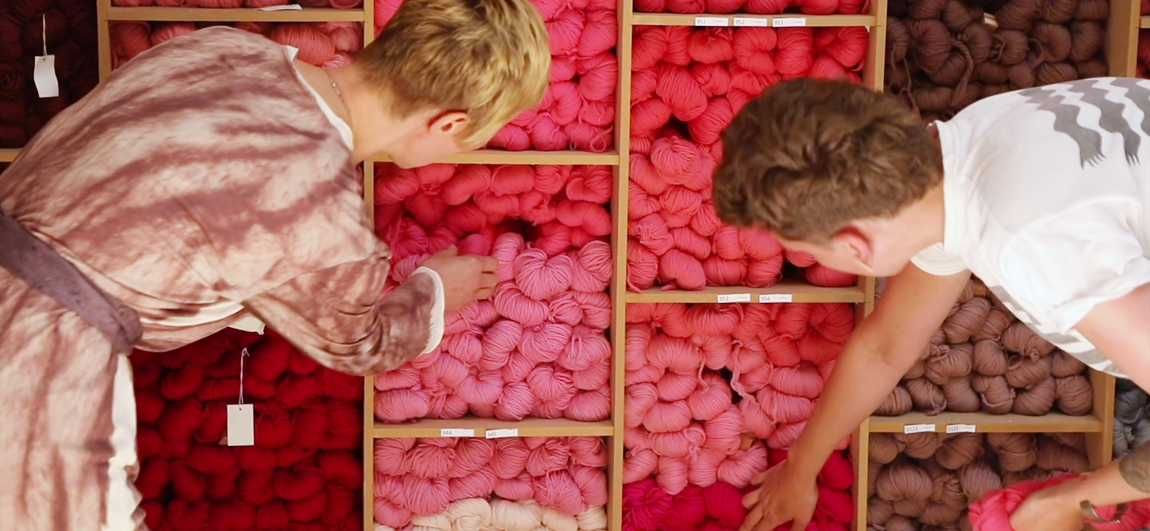
Before the tufting began, Kristi spent time with Victoria discussing the painting, devising ways to maintain the gestural, expressive feel of the painted lines in the rug, and sampling colours.
It was exciting to see the rug emerge. The final process is to clipper the front of the rug. As all the uneven lengths of wool are cut back the image jumps out and it wasn’t until this final moment that we saw how the different colours, blends, patches and patterns created such a riotous celebration.
